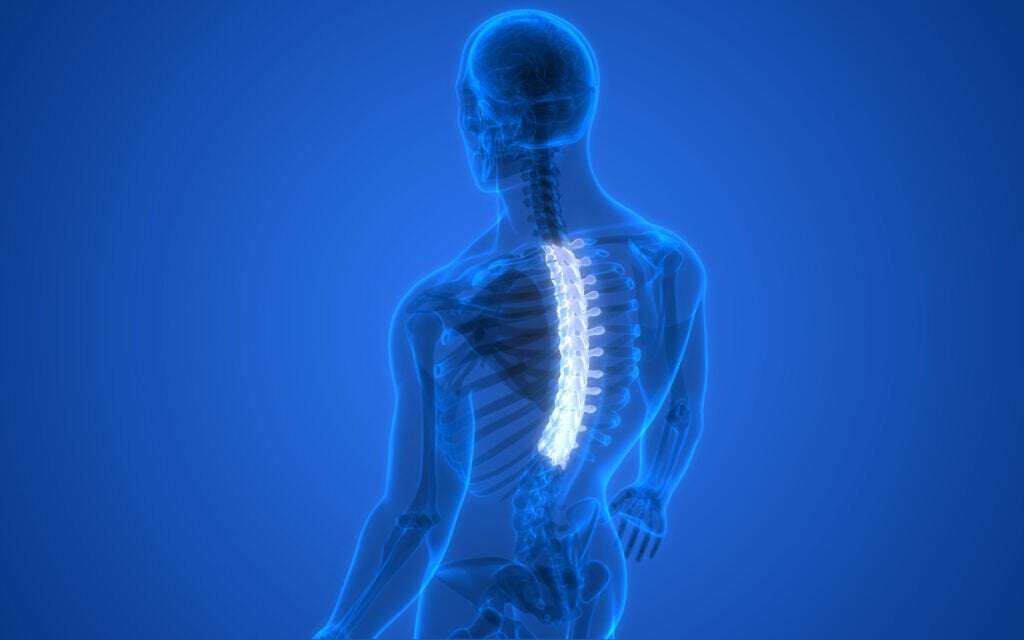Israeli scientists have made paralyzed mice walk by giving them spinal cord implants, and say they are less than three years away from doing the same for humans in clinical trials.
The world-first experiment took place at Tel Aviv University, where a large team engineered spinal cord tissue from human cells, and implanted them into 15 mice with long-term paralysis. Twelve of the mice then walked normally, the scientists revealed on Monday in newly peer-reviewed research published in the journal Advanced Science.
âIf this works in humans, and we believe that it will, it can offer all paralyzed people hope that they may walk again,â Prof. Tal Dvir’s research team at the Sagol Center for Regenerative Biotechnology told The Times of Israel, adding that discussions regarding clinical trials have been opened with Americaâs Food and Drug Administration.
He said that while all his mice received spinal implants from cells of three people, if the innovation is deployed in humans, the plan is to grow a unique spine for each patient using cells from their own body.
Dvir predicts this will âenable regeneration of the damaged tissue with no risk of rejection,â and it will eliminate the need to suppress the immune systems of recipients, as happens in the case of many transplants.
Sign up for the Tech Israel Daily and never miss Israel's top tech stories Newsletter email address Subscribe By signing up, you agree to the terms
âThere are millions of people around the world who are paralyzed due to spinal injury, and there is still no effective treatment for their condition,” Dvir said.
“People injured at a very young age are destined to sit in a wheelchair for the rest of their lives, bearing all the social, financial, and health-related costs of paralysis. We hope to solve this and help them to walk.â
To date, some scientific teams have conducted experiments producing human-based stem cells and injecting them into the spinal cords of animals. But Dvir said this is the first lab to grow pieces of actual spine engineered from human cells, and transplant them.
Another unique factor in his research is its treatment of long-paralyzed animals, as the stem cell studies tend to have tended to limit themselves to newly paralyzed animals.
âRealistically, most humans needing treatment will have been paralyzed for some time when treatment is wanted, so this is important,â said Dvir. âIn our experiment, we used both newly paralyzed and long-paralyzed mice. We had success with both, and expect the impact to work with humans who have been paralyzed for different amounts of time.â
He added that while the success rate with his spinal cord was 80% for mice with chronic paralysis, among those with recent or short-term paralysis, 100% of mice walked.
Dvir said that the process starts with a small biopsy from the belly.
âWe separate the fat cells from other materials such as collagen and sugars, and reprogram the cells using genetic engineering methods, so they can âbecomeâ any cell in the body,” he explained.
âWe put the cells in a substance that we make from the non-cellular material from the fat tissue gathered in the biopsy, put the cells inside it for 30 days, and we mimic how a spinal cord develops in an embryo. This produces spinal cord micro-neuron tissue, which we transplant into animals that have been paralyzed for a long time.â
Dvir said that a company, Matricelf, has been formed to bring the technology to clinical trials, and he expects this to happen within two and a half years. He stressed that while the experiment so far involved mice, the implants were grown from humans cells, meaning that the research is already at an advanced stage.
âWeâve been using human implants on the mice, not mice implants, which means weâre not going back to the beginning of research to move over to humans. Rather, we know how to prepare the implants for humans, which is what makes us optimistic we will move quickly to clinical trials,â he said.
His team, which includes Lior Wertheim, Dr. Reuven Edri, and Dr. Yona Goldshmit, believes that the new method has relevance beyond spinal injury, and are now exploring using it for a range of other diseases and injuries, such as Parkinsonâs disease, brain trauma, myocardial infarction, and age-related macular degeneration.

DrBoomkin on February 7th, 2022 at 11:52 UTC »
Note that this isn't some journalistic exaggeration, this is a peer reviewed study that has been published. Very promising!
top_of_the_stairs on February 7th, 2022 at 11:37 UTC »
I'm grateful for all of the mice & rats whose lives have been lost over the years for the sake of bettering humans' health. Thank you, little heroes 🥲❤️🐀🐁
SchwarzerWerwolf on February 7th, 2022 at 11:30 UTC »
Oh damn, this could be massive